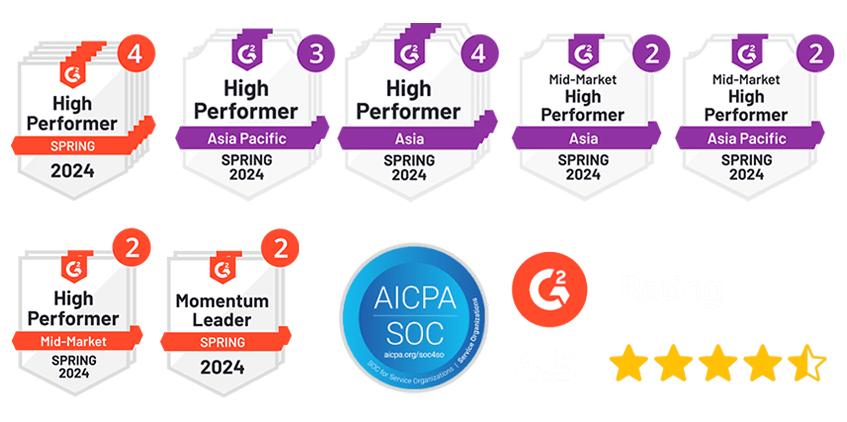Customer service costs can be a major headache for businesses. Traditional support operations force companies into an uncomfortable choice: deliver quality service or control expenses. Most organizations struggle with this trade-off, watching operational costs climb as customer bases grow.
AI is changing this equation. Over 60% of organizations have implemented call AI for customer service operations, and the results speak volumes. These AI-powered solutions have become essential for customer experience teams looking to automate repetitive tasks and improve response times. The impact is substantial—autonomous customer support has proven to slash resolution times by nearly 90%.
The numbers tell a compelling story. Businesses that adopt AI-driven solutions enjoy faster response times and lower costs while simultaneously improving customer satisfaction. AI ensures customers receive information in seconds, and 75% of customers show increased loyalty to companies offering seamless experiences across channels. Customer experience leaders are taking notice—42% recognize generative AI’s growing influence on voice-based interactions.
The financial benefits are equally impressive. Experts predict AI technology will soon reduce the $5-10 cost per call to potentially half that amount through a blended approach of automation and human agents. This cost reduction doesn’t come at the expense of service quality—quite the opposite.
Understanding how to implement AI in your customer service operations can dramatically cut costs while creating faster, more consistent experiences that keep customers coming back. This guide explores the practical strategies and tools you need to make this transformation work for your business.
How AI is Changing Customer Service
Image Source: VoiceSpin
Customer service operations are experiencing a fundamental shift. The traditional model—reactive support that waits for problems to occur—is giving way to intelligent systems that predict and prevent issues before they impact customers. By 2025, AI will drive 95% of customer interactions, forcing companies that fail to adapt to fall behind.
From manual to automated: a quick shift
The old approach was straightforward but inefficient. Customers encountered problems, then contacted support teams for resolution. This reactive model created bottlenecks, inconsistent experiences, and escalating costs as businesses grew. Support teams found themselves constantly firefighting rather than solving root causes.
Today’s automated systems operate differently. They identify and resolve issues before customers even notice them. Recent research shows that automated customer service accelerates first response time by 37% and helps resolve issues 52% faster. This shift enables support teams to handle more customers without expanding headcount, creating significant operational efficiencies.
What drives this transformation? Customers themselves are pushing the change. Modern consumers are increasingly tech-savvy and often prefer self-service options over speaking with agents. They’ve developed skills for finding solutions independently, with one clear goal: to avoid phone conversations whenever possible.
What is AI-based customer support?
AI-based customer support uses intelligent technologies to create fast, efficient, and personalized assistance experiences. Rather than replacing human agents, these systems enhance their capabilities through automation, streamlined workflows, and real-time guidance.
The core technologies powering AI customer support include:
- Natural Language Processing (NLP) to understand customer inquiries regardless of how they’re phrased
- Machine Learning to continuously improve response accuracy over time
- Predictive analytics to anticipate customer needs before they arise
- Sentiment analysis to gauge customer emotions and adapt responses accordingly
These systems handle everything from answering common questions and categorizing tickets to providing 24/7 support across multiple languages. Most importantly, they ensure consistency—unlike human agents who might provide different answers due to fatigue or knowledge gaps.
Why now is the tipping point for AI in support
Several factors have converged to make AI adoption inevitable. Computing power, cloud accessibility, and AI-driven automation have advanced dramatically, making implementation easier than ever before. The question has shifted from whether businesses should adopt AI to how quickly they can implement it.
Customer expectations have evolved substantially. A Gartner survey of 4,879 customers conducted in early 2025 found that 51% would willingly use generative AI assistants for customer service interactions on their behalf. Business leaders are feeling increased pressure to implement generative AI, with many seeing opportunities for headcount reduction through automation.
The tipping point is also driven by proven results. AI-powered solutions have demonstrated their ability to automate routine tasks, enhance decision-making, and reduce operational inefficiencies—all leading to improved profitability. Organizations with mature AI adoption reported 17% higher customer satisfaction rates than their counterparts.
Forward-thinking companies recognize that embracing AI isn’t just about cutting costs—it’s about creating a competitive advantage through superior customer experiences. The businesses that act now will set the standard for what customers expect from service interactions in the future.
Key Benefits of AI in Customer Service
AI implementation in customer service delivers measurable advantages that directly impact your bottom line. From dramatically shortened wait times to significant cost reductions, the benefits extend far beyond simple automation. Here’s how call AI for customer service is changing support operations:
1. Faster response times and 24/7 availability
AI dramatically accelerates customer interactions, with studies showing a 22% drop in response times even as customer-agent interactions increase. For less experienced agents, AI assistance can reduce response times by an impressive 70%. This speed improvement happens because AI tools analyze questions instantly and provide answers without delays or fatigue.
Human agents need breaks and work shifts, but AI-powered customer service operates continuously. This 24/7 availability ensures customers receive support at any hour, effectively eliminating the concept of “after hours”. Your customers get answers at 2 AM with the same quality as 2 PM, particularly valuable for global businesses serving multiple time zones.
2. Lower operational costs and higher efficiency
The financial impact is substantial. Organizations implementing AI solutions report saving up to 60,000 human labor hours monthly. AI chatbots handle routine inquiries without additional resources, lowering operational costs associated with customer support.
AI breaks the traditional linear growth model, where expanding customer bases required proportional increases in support staff. Your team can deliver better service more economically, with documented cases showing up to 60% cost reduction. This efficiency comes primarily from automating routine tasks, allowing human agents to focus on complex, high-value interactions.
3. Consistent and accurate support
AI brings unprecedented consistency to customer interactions. Human agents inevitably vary in knowledge, mood, and response quality, whereas AI maintains identical response quality regardless of timing or circumstances. This uniformity proves especially valuable when handling routine inquiries where consistency is crucial.
Inconsistent support quality significantly increases operational costs, as customers with unresolved issues typically contact support again. According to the Technical Assistance Research Programs Institute, it costs six times more to solve a customer problem after the initial contact. AI-powered automation reduces the likelihood of human error, ensuring accuracy in customer support.
4. Scalability during peak hours
AI customer service manages fluctuating demand effectively. During holidays, product launches, or unexpected traffic spikes, AI systems maintain performance without degradation. Your business can handle millions of interactions simultaneously without bottlenecks or quality compromises.
This elastic capacity means you’ll never again worry about staffing for peak periods or managing sudden surges in inquiries. AI solutions effortlessly scale to handle fluctuations in customer inquiries, ensuring consistent service quality even during the highest-demand periods.
5. Improved customer satisfaction
AI implementation correlates directly with improved customer experience metrics. Organizations with mature AI adoption report 17% higher customer satisfaction scores. This improvement stems from several factors, including faster resolutions, reduced wait times, and more personalized interactions.
Recent surveys show 51% of consumers prefer interacting with bots when seeking immediate service. Meanwhile, 64% of business owners believe AI improves their customer relationships. Contrary to concerns about impersonal service, properly implemented AI actually enhances the human elements of customer interaction by freeing human agents to focus on complex issues requiring empathy and creativity.
AI Tools That Cut Costs and Improve Speed
Businesses today have access to specific AI technologies that deliver measurable cost reductions while improving response times. These tools work together to create seamless customer experiences while reducing the need for manual intervention in routine tasks.
1. Chatbots and virtual assistants
Chatbots handle routine inquiries without human involvement. Nearly half (49%) of US adults have used AI chatbots for customer service in the past year, with 51% preferring bots over humans for immediate assistance. These virtual assistants provide round-the-clock support regardless of time zones or business hours.
What makes chatbots particularly valuable is their scalability. They can handle large inquiry volumes simultaneously, significantly lowering operational costs while maintaining service quality. During unexpected traffic spikes, businesses can manage growth without proportional staff increases.
2. Voice AI for customer service calls
Voice AI agents understand and respond to human speech naturally, moving beyond frustrating traditional phone systems. These systems reduce wait times by up to 50% while providing personalized experiences that customers now expect. Unlike rigid IVR systems, modern voice AI enables natural conversations—complete with pauses and interruptions—making interactions feel more human.
The containment rates are impressive. Organizations implementing voice AI report up to 65% containment rates, meaning those calls never require human intervention.
3. Automated ticketing and routing
Intelligent ticket routing eliminates manual assignment delays. AI-powered ticketing systems can automate up to 80% of customer interactions. These systems analyze incoming support tickets and assign them to the most appropriate agent or department based on factors like expertise, workload, and priority.
This intelligent triage categorizes and routes tickets based on intent, sentiment, and language, ensuring faster resolution and preventing agent overwhelm. The result is improved response times and higher first-contact resolution rates.
4. Agent assist tools
Rather than replacing human agents, AI-assist tools enhance their capabilities by providing real-time guidance during customer interactions. These technologies analyze conversations in progress, suggesting relevant information and next steps.
The performance improvements are measurable. Agent assist features can reduce average handle time by 30 seconds and decrease after-call work through automated summaries and transcriptions. This support proves especially valuable for new or less experienced agents, helping them deliver expert-level service from day one.
5. Predictive analytics and sentiment analysis
Predictive analytics helps contact centers anticipate customer needs before they arise. Through advanced analysis of historical data, this capability enables proactive problem-solving and resource optimization.
Similarly, sentiment analysis uses natural language processing to gauge customer emotions in real-time. The impact is significant—business analytics platform Qlik saw escalations reduce by 30% in just six months after implementing sentiment analysis.
How AI Enhances the Customer Journey
Customer service interactions can make or break business relationships. Traditional support often feels disconnected and impersonal, forcing customers to repeat information across different channels and leaving them frustrated with generic responses.
AI changes this dynamic by creating truly personalized customer experiences that build loyalty and trust. Modern AI systems transform ordinary interactions into meaningful connections through contextual intelligence and smart data usage.
1. Personalized interactions using past data
AI analyzes customer preferences, previous purchases, and interaction history to generate highly personalized responses. An AI agent might notice a customer recently bought a sweatshirt and intelligently recommend matching sweatpants or slippers. This level of personalization addresses real customer expectations—71% of consumers expect companies to deliver tailored content, with 67% expressing frustration when businesses don’t meet this expectation.
The personalization goes beyond simple product recommendations. AI can adjust communication style, timing preferences, and even language complexity based on each customer’s history, creating experiences that feel genuinely customized rather than automated.
2. Omnichannel support with context retention
Context has become “the new currency” in customer support. Customers expect seamless experiences, whether they switch from WhatsApp to email or from chat to phone calls. Advanced AI eliminates the frustrating experience of repeating information across different channels by maintaining conversation history and complete customer context.
This cohesive approach delivers measurable results. When customers don’t have to restart conversations or re-explain their issues, 50% of customers don’t abandon purchases due to delayed responses. The AI system remembers every touchpoint, creating continuity that improves both customer satisfaction and operational efficiency.
3. Real-time escalation to human agents
Effective AI systems recognize when to hand off conversations to human agents. These transfers aren’t system failures but intentional design features. Well-implemented escalation systems monitor for customer frustration signals, off-script conversations, or explicit requests for human assistance.
The handoff experience includes passing along conversation summaries and relevant customer data to ensure agents have complete context. This seamless transition prevents customers from repeating their issues and allows human agents to focus immediately on resolution rather than information gathering.
4. Proactive support and recommendations
Predictive analytics enables AI to forecast future customer needs based on behavior patterns. Rather than waiting for problems to arise, these systems identify potential issues and offer solutions before customers even realize they need help.
This proactive approach transforms support from reactive problem-solving to preventative care, reducing business disruption. For example, AI might detect that a customer’s subscription is about to expire and automatically send renewal options, or notice usage patterns that suggest a customer needs additional services.
Cost-Saving Strategies Using AI in Call Centers
Image Source: VoiceSpin
Call center economics are changing rapidly. Strategic AI implementation creates measurable cost reductions across multiple operational areas while improving key performance metrics. With the right approach, your customer service operation can achieve significant savings without sacrificing quality.
1. Reducing call volume with self-service
Self-service options powered by AI dramatically decrease inbound call volumes without compromising service quality. Natural language processing enables virtual assistants to understand customer intent accurately, resolving issues without agent involvement. The numbers support this approach—69% of customers prefer using chatbots for quick inquiries, reflecting growing consumer comfort with automated solutions.
AI-powered IVR systems and voicebots handle routine tasks like account balance checks and password resets, freeing agents for complex issues. Call deflection strategies that route inquiries to alternative service channels create substantial operational savings by addressing customer needs through less resource-intensive channels. This proactive approach reduces the burden on human agents while maintaining customer satisfaction.
2. Optimizing staffing with predictive scheduling
AI-driven workforce management transforms scheduling accuracy and efficiency. Machine learning algorithms analyze historical patterns to predict interaction volumes across channels, improving forecast accuracy from ±20% (manual methods) to ±5-8% with AI tuning. This precision helps eliminate unnecessary labor costs from overstaffing or understaffing, particularly important since over 95% of call center costs relate directly to staffing.
The practical benefits are significant. AI scheduling solutions can generate optimized schedules for 1000+ agents in minutes rather than hours or days. This efficiency allows managers to respond quickly to changing demand patterns and ensure adequate coverage without excess labor costs.
3. Minimizing training costs with an AI agent assist
Agent assist technologies deliver impressive reductions in onboarding expenses. These systems provide real-time coaching that helps representatives resolve issues faster and with greater accuracy. The impact is measurable: agents can handle 28% more conversations, reducing operational costs while decreasing customer hold times.
New employees benefit most from AI guidance, which shortens learning curves and allows them to be productive from day one. Enhanced training tools featuring interaction simulation and personalized coaching ensure consistent performance without extensive traditional training programs. This approach reduces both initial training costs and ongoing coaching requirements.
4. Lowering average handling time (AHT)
AI implementations consistently reduce AHT—a critical efficiency metric for call centers. Recent deployments show AI has reduced handle time by approximately 9% while increasing issues resolved per hour by 14%. These improvements come through multiple mechanisms:
- Automatic summarization of interactions reduces after-call work
- Real-time access to relevant knowledge eliminates searching time
- Automated transcription and documentation streamline workflows
The results speak for themselves. A financial services company experienced a 15% reduction in new staffing needs, while a major insurance company saw AHT reduced by 30% in just 90 days. These improvements directly translate to lower operational costs and improved customer experiences.
Peakflo AI Voice Agent: Transforming Customer Service at Scale
Peakflo AI Voice Agent is built to help businesses cut costs, improve response times, and elevate the customer experience—all at once. Unlike traditional IVR systems that frustrate callers with rigid menus, Peakflo enables natural, human-like conversations that feel intuitive and seamless. The AI understands intent, sentiment, and context, allowing it to resolve up to 65% of calls without requiring human intervention.
For support teams, this means fewer repetitive inquiries and lower average handling times. For customers, it means faster, 24/7 assistance with consistent quality—whether they’re calling at 9 AM or 2 AM. Peakflo’s AI doesn’t just answer calls; it learns continuously, improving accuracy and ensuring each interaction is better than the last.
Businesses using Peakflo AI Voice Agent have seen measurable results: cost reductions of up to 60%, significant decreases in staffing needs, and resolution times slashed by nearly 90%. By blending automation with seamless escalation to human agents when necessary, Peakflo ensures that efficiency never comes at the expense of empathy.
In an era where customer expectations are higher than ever, Peakflo AI Voice Agent gives your business the tools to deliver faster, smarter, and more consistent support—while keeping operational costs under control.
Ready to see how Peakflo AI Voice Agent can transform your customer service? Book a call with our experts today and explore how your business can scale support without scaling costs.
A Way Forward
Call AI represents more than just another technology trend—it’s a fundamental shift in how businesses approach customer service operations. Companies that embrace AI-powered solutions benefit from dramatic cost reductions while simultaneously improving response times, consistency, and overall customer satisfaction. AI has effectively eliminated the traditional trade-off between service quality and operational expenses.
The return on investment speaks for itself. Organizations have documented cost reductions of up to 60% alongside resolution time improvements approaching 90%. These systems scale effortlessly during peak periods without quality degradation, solving a challenge that has historically plagued customer service operations.
Call AI for customer service delivers what every business needs: happier customers, lower operational costs, and a competitive edge. The question is no longer whether you should implement AI in your customer service operations, but how quickly you can do so while your competitors are still catching up.
FAQs
Q1. How does AI improve customer service efficiency?
AI enhances customer service by automating routine tasks, providing 24/7 support, and enabling faster response times. It can handle multiple inquiries simultaneously, reducing wait times and operational costs while maintaining consistent service quality.
Q2. What are some key AI tools used in modern customer service?
Popular AI tools for customer service include chatbots, voice AI for calls, automated ticketing systems, agent assist tools, and predictive analytics. These technologies work together to streamline operations, reduce costs, and improve customer experiences.
Q3. Can AI really personalize customer interactions?
Yes, AI can deliver highly personalized experiences by analyzing customer data, purchase history, and interaction patterns. It can provide tailored recommendations, retain context across multiple channels, and even anticipate customer needs before they arise.
Q4. How does AI impact call center costs?
AI significantly reduces call center costs by decreasing call volumes through self-service options, optimizing staff scheduling, minimizing training expenses with AI-assisted coaching, and lowering average handling times. Some businesses report cost reductions of up to 60%.
Q5. Will AI replace human customer service agents?
Rather than replacing human agents, AI enhances their capabilities by handling routine inquiries and providing real-time assistance. This allows human agents to focus on complex issues that require empathy and creativity, ultimately improving overall service quality.









![Why AI Sales Calls Are Making Good Sales Reps Even Better [2025 Guide] ai sales calls](https://cdn-kmjmp.nitrocdn.com/YvtqmrsiHUxqerlSiZgbfzqqTARWTElr/assets/images/optimized/rev-834053b/blog.peakflo.co/wp-content/uploads/2025/09/65168cf6-3001-4733-8cbc-12d5684cf449-218x150.webp)

































